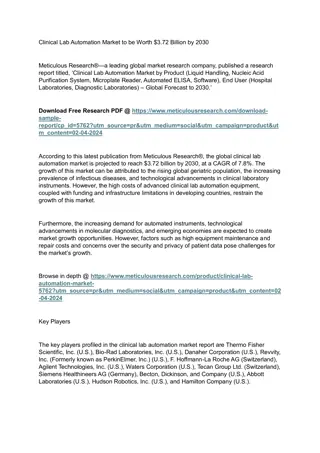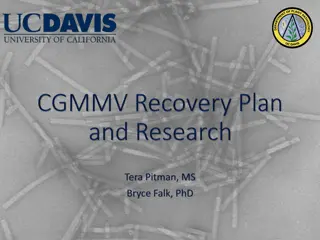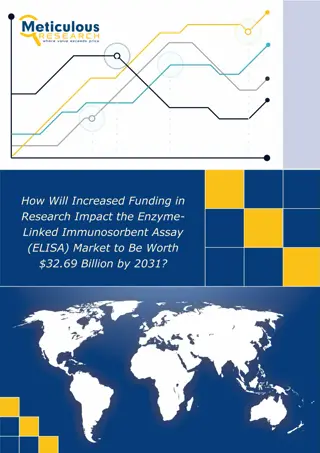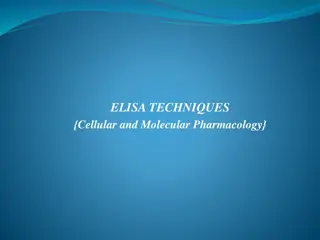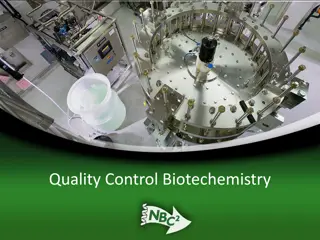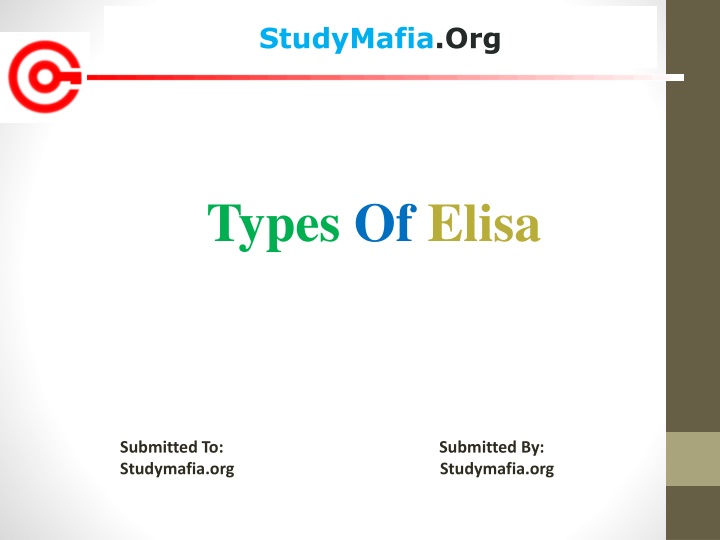
Different Types of ELISA Techniques
Explore the world of ELISA with an in-depth look at the various types: Direct, Indirect, Sandwich, and Competitive. Learn about their principles, advantages, and disadvantages to enhance your knowledge in microbiology and virology.
Download Presentation

Please find below an Image/Link to download the presentation.
The content on the website is provided AS IS for your information and personal use only. It may not be sold, licensed, or shared on other websites without obtaining consent from the author. If you encounter any issues during the download, it is possible that the publisher has removed the file from their server.
You are allowed to download the files provided on this website for personal or commercial use, subject to the condition that they are used lawfully. All files are the property of their respective owners.
The content on the website is provided AS IS for your information and personal use only. It may not be sold, licensed, or shared on other websites without obtaining consent from the author.
E N D
Presentation Transcript
StudyMafia.Org Types Of Elisa Submitted To: Submitted By: Studymafia.org Studymafia.org
Content What is an ELISA? Types of ELISA Direct Indirect Sandwich Competitive Principle Conclusion
What is an ELISA? ELISA stands for enzyme-linked immunoassay. It is a commonly used laboratory test to detect antibodies in the blood. An antibody is a protein produced by the body s immune system when it detects harmful substances, called antigens. ELISA is an effective and widely used technique in microbiology and virology in particular, for investigating infectious pathogens.
Types of ELISAs The four main types of ELISAs are Direct Indirect Sandwich Competitive
Direct ELISA In a direct ELISA, an antigen or sample is immobilized directly on the plate and a conjugated detection antibody binds to the target protein. Substrate is then added, producing a signal that is proportional to the amount of analyte in the sample. Since only one antibody is used in a direct ELISA, they are less specific than a sandwich ELISA. When to Use: Assessing antibody affinity and specificity. Investigating blocking/inhibitory interactions.
Advantages: Fast and simple protocol Disadvantages: Less specific since you are only using 1 antibody. Potential for high background if all proteins from a sample are immobilized in well.
Indirect ELISA An indirect ELISA is similar to a direct ELISA in that an antigen is immobilized on a plate, but it includes an additional amplification detection step. First, an unconjugated primary detection antibody is added and binds to the specific antigen. A conjugated secondary antibody directed against the host species of the primary antibody is then added. Substrate then produces a signal proportional to the amount of antigen bound in the well. When to Use: Measuring endogenous antibodies.
Advantages: Amplification using a secondary antibody Disadvantages: Potential for cross-reactivity caused by secondary antibody
Sandwich ELISA Sandwich ELISAs are the most common type of ELISA. Two specific antibodies are used to sandwich the antigen, commonly referred to as matched antibody pairs. Capture antibody is coated on a microplate, sample is added, and the protein of interest binds and is immobilized on the plate. A conjugated-detection antibody is then added and binds to an additional epitope on the target protein. Substrate is added and produces a signal that is proportional to the amount of analyte present in the sample. Sandwich ELISAs are highly specific, since two antibodies are required to bind to the protein of interest. When to Use: Determining analyte concentration in a biological sample.
Advantages: Highest specificity and sensitivity Compatible with complex sample matrices Disadvantages: Longer protocol Challenging to develop
Competitive ELISA Competitive ELISAs are commonly used for small molecules, when the protein of interest is too small to efficiently sandwich with two antibodies. Similar to a sandwich ELISA, a capture antibody is coated on a microplate. Instead of using a conjugated detection antibody, a conjugated antigen is used to complete for binding with the antigen present in the sample. The more antigen present in the sample, the less conjugated antigen will bind to the capture antibody. Substrate is added and the signal produced is inversely proportional to the amount of protein present in the sample.
When to Use: Determining concentrations of a small molecules and hormones. Advantages: Ability to quantitate small molecules Disadvantages: Less specific since you are only using 1 antibody Requires a conjugated antigen
Principle of ELISA ELISA works on the principle that specific antibodies bind the target antigen and detect the presence and quantity of antigens binding. In order to increase the sensitivity and precision of the assay, the plate must be coated with antibodies with high affinity. ELISA can provide a useful measurement of antigen-antibody concentration.
Conclusion ELISA test is an innovation in biomedical research field as it gives most accurate results. It has many advantages over other methods in terms of sensitivity, specificity and in terms of cost. It detects almost all types of biological molecules in the given sample at very low concentrations and quantities. ELISA remains an important tool in both clinical and basic research, as well as in clinical diagnostics although it has its own disadvantages and limitations.
References Google.com Wikipedia.org Studymafia.org Slidespanda.com
Thanks To StudyMafia.org


